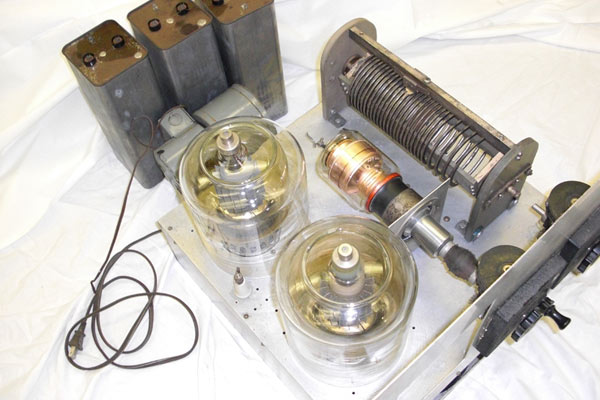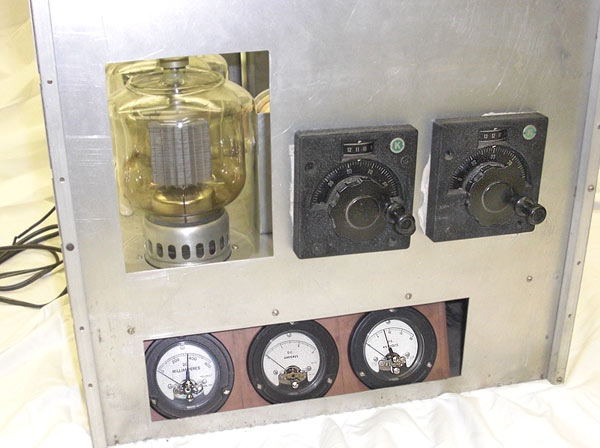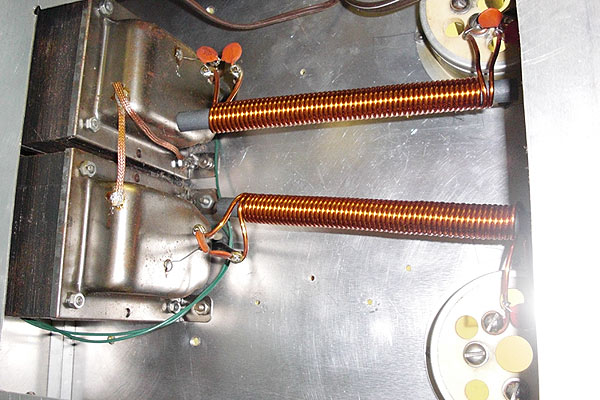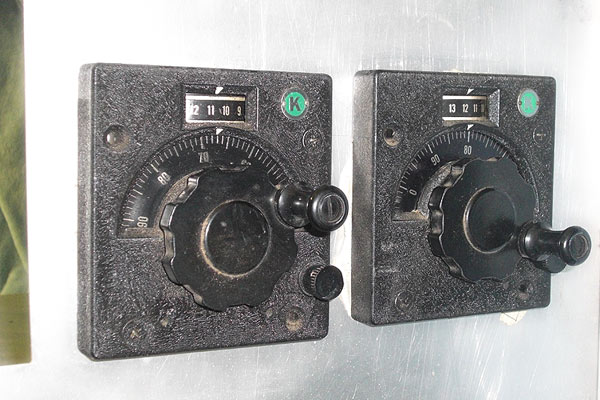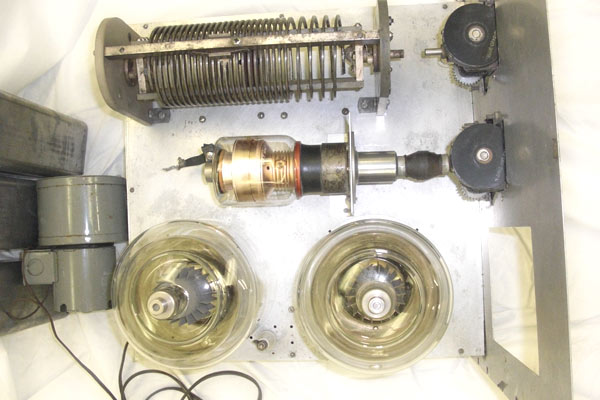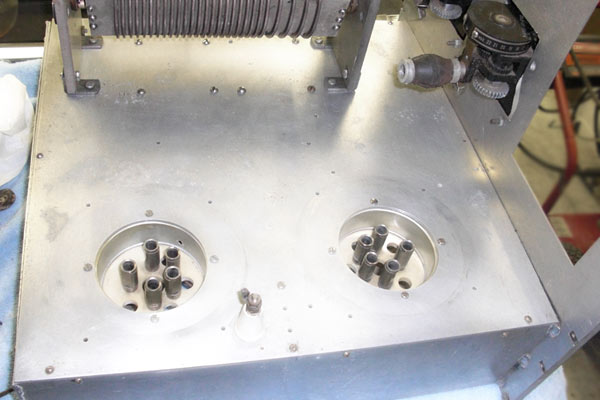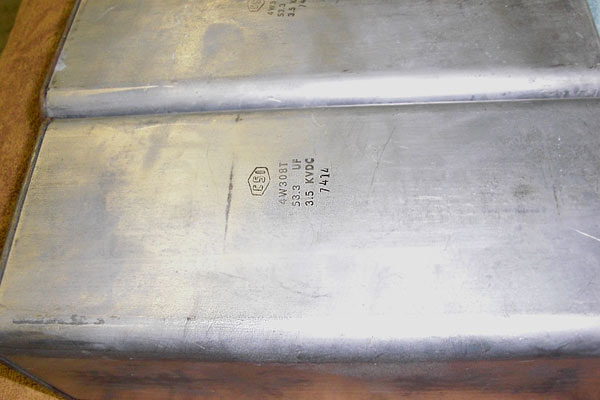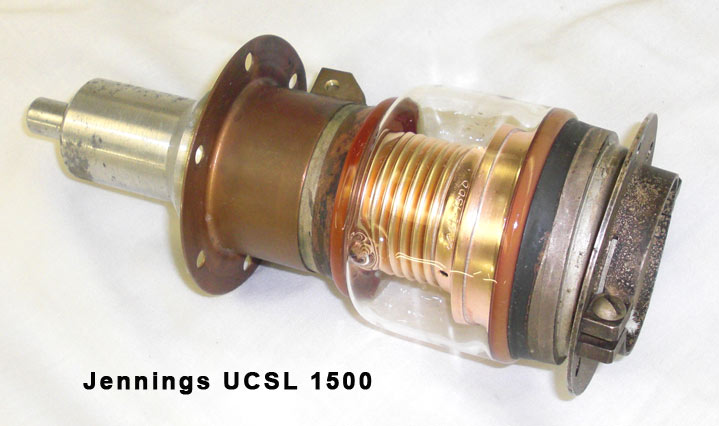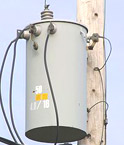|
|
|
|
|
|
|
|
|
|
|
|
|
|
|
|
|
|
|
|
|
|
|
|
|
|
|
|
I
had the chassis made at a machine shop. The RF deck is a solid The dials, meters, CSI oil capacitors, chimneys are all US Navy. The roller coil is made by E F Johnson 226-1, 22.5 uH ( 3" x 12 3/4"). The
vacuum variables are Jennings Radio.
As I remember from 1980 when we were building these, for a double hole 4-1000 to work on 75 meters
you needed a 1500 pf. That was the reason for the 1500 Jennings. watch the pin temperature so not to melt the lower temp glass around them. This is the reason for the high airflow squirrel cage fan in the photos. A lot of the guys were building 4 hole 4-1000 decks. At 10kv
1 amp on a peak could be 40kw, it was felt. Not that I would know about that myself...
There was one guy in the state of Missouri one night who was horse racing with a friend of mine in Humboldt County California on 3.900 with a listening station in Hawaii. The Missouri station had a 4 hole 4-1000 amp and the station in Humboldt had a 2 hole 4-1000. Well, the 2 hole was beating the Missouri station. This was at about 3 am PST in 1980 or so. Both of these guys kept pushing their amps harder and harder. The Missouri station had his station in his barn. He also had slugs in his fuse box which effectively hardwired his pole pig transformer , which he ran backwards in his barn to power his four 4-1000 tubes, to the power company.
Pole Pig Transformer on a pole
In the middle of this horse race the Missouri station suddenly went off the air. Two weeks later we heard the Missouri station on the air again, only with a very weak signal. He was running 100 watts. It turns out that during that horse race when he was driving the finals harder and harder there suddenly was a large flash. He woke up across the barn from where he had been standing. His barn was on fire. He said that he found that the glass on the tube where the pins are had melted. This caused air to enter the tube. When this happened the tube or tubes... developed an arc. This caused the tube to short the B+ power coming from the pole pig which itself was being supplied by a hardwire connection to the power company. Now, on 3.900 we all knew that this guy was a real hero! We all felt that this was real ham radio at it's finest. :-) No one could ever call either of these guys "Appliance Operators". I am still telling the story! The Missouri station could have been smart though and used circuit breakers, but then we wouldn't this great story to tell.
|
